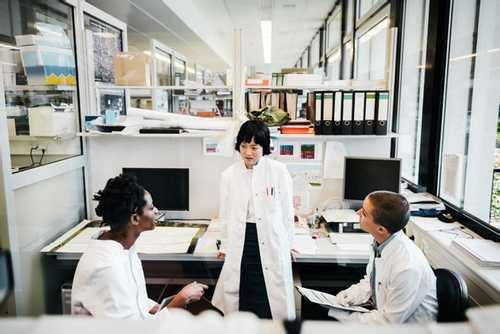The Power of Scientific Brainstorming
Curated from: scientificamerican.com
Ideas, facts & insights covering these topics:
3 ideas
·481 reads
6
1
Explore the World's Best Ideas
Join today and uncover 100+ curated journeys from 50+ topics. Unlock access to our mobile app with extensive features.
Conservative research
Generally, scientists occupy themselves with their longstanding research programs that follow previous ones.
But, this pattern can be disrupted by unexpected breakthroughs as a result of novel experimental findings. Anomalous experimental results lead to a surge in publications about possible interpretations and implications.
28
242 reads
How to spend research time
The question is: how much time should a scientist dedicate to revising research goals instead of pursuing past interests?
Too little time of brainstorming might lead to inconsequential research directions full of dead ends and stagnation. Spending too much time on planning can lead to conflicting considerations that could lead to procrastination. In order to discover something unexpected, it is necessary to take risks.
27
123 reads
Research: the road not taken
Since it is unclear in advance which research direction will yield results, scientific progress needs independent explorers. Sometimes a conventional path leads to an unexpected breakthrough, but more often, a traditional path leads to a traditional result.
Following new paths bring fresh opportunity for discovering hidden treasures.
29
116 reads
IDEAS CURATED BY
Cameron 's ideas are part of this journey:
Learn more about problemsolving with this collection
How to use storytelling to connect with others
The psychology behind storytelling
How to craft compelling stories
Related collections
Similar ideas
3 ideas
A Scientific Theory of Humor
scientificamerican.com
3 ideas
The Science Behind Dreaming
scientificamerican.com
4 ideas
The Surprising Benefits of Sarcasm
scientificamerican.com
Read & Learn
20x Faster
without
deepstash
with
deepstash
with
deepstash
Personalized microlearning
—
100+ Learning Journeys
—
Access to 200,000+ ideas
—
Access to the mobile app
—
Unlimited idea saving
—
—
Unlimited history
—
—
Unlimited listening to ideas
—
—
Downloading & offline access
—
—
Supercharge your mind with one idea per day
Enter your email and spend 1 minute every day to learn something new.
I agree to receive email updates

